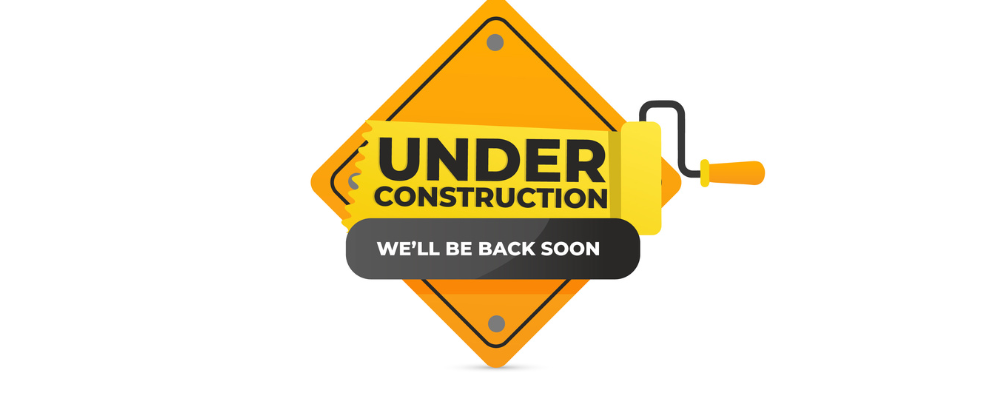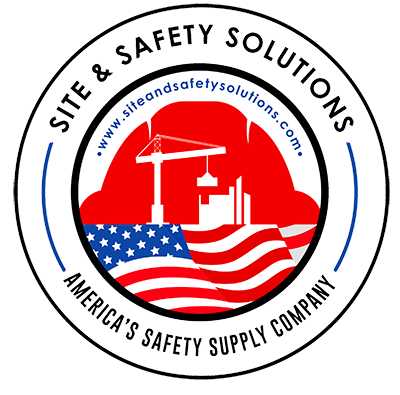
Introduction
Construction sites are dynamic environments where safety is the cornerstone of every operation. Amidst the hustle and bustle of construction, ensuring the well-being of workers and compliance with stringent safety regulations remains paramount. Here, inspection tags emerge as indispensable tools, functioning as silent guardians that bolster safety measures and uphold regulatory adherence.
Significance of Inspection Tags
Within the construction realm, inspection tags are not mere identifiers but silent sentinels that communicate vital information about equipment, machinery, and structures’ status, condition, and compliance. These small but pivotal markers carry the weight of accountability, serving as a visible testament to the meticulous adherence to safety protocols.
Importance of Maintaining Safety Standards
In an inherently high-risk industry like construction, adherence to safety standards isn’t merely a legal obligation; it’s a moral imperative. Each inspection tag affixed to equipment or scaffolding represents a commitment to safeguarding lives, preventing accidents, and maintaining an environment where workers can thrive without compromising their well-being.
Upholding Compliance
Regulations in the construction sector are stringent, and rightfully so. Inspection tags serve as tangible evidence of compliance, allowing stakeholders, inspectors, and workers to ascertain the status of equipment quickly, complete safety checks, and adhere to prescribed standards. Their presence is not just a formality; it’s a testament to a site’s dedication to meeting and surpassing regulatory expectations.
This blog delves into the nuanced world of inspection tags tailored explicitly for construction workers. We’ll explore their types, functionalities, and the pivotal role they play in fortifying safety protocols and ensuring unwavering compliance within the bustling construction landscape.
Understanding Inspection Tags
Inspection tags are pivotal safety tools extensively used in the construction industry to visually communicate critical information regarding equipment, structures, or processes. They serve as a tangible indication of inspection status, conveying crucial details about safety assessments, maintenance schedules, and compliance adherence. These tags typically come in various forms, materials, and designs, each tailored to address specific industry needs.
Types of Inspection Tags Available:
- Brady® Inspection Record Tags: These tags are meticulously designed to facilitate detailed record-keeping. They often feature sections for inspectors to note inspection dates, findings, and required actions. Their robust construction ensures durability, essential for long-term use in diverse construction environments.
- Brady® Standard Scaffold Status Tags: Specifically tailored for scaffolding, these tags provide clear and concise information about the status of scaffolds, indicating whether they are safe for use or need attention. Their design aids in quick assessment and helps prevent accidents related to faulty scaffolding.
- Honeywell Styrene Lockout “Do Not Operate Tags”: These tags play a critical role in lockout/tagout procedures, preventing unauthorized operation of machinery or equipment during maintenance or repair. Their bold colors and clear instructions effectively communicate the prohibition of use.
- Metal 4-Year Inspection Tag & Plastic One-Year Inspection Tag: These tags are designed with specific inspection timelines in mind. The metal variant, built for longevity, typically signifies longer inspection intervals, while the plastic tag is more suited for shorter-term inspections. Both serve as reminders for routine checks and maintenance.

Importance of Inspection Tags in Construction
-
Streamlining Safety Procedures:
Inspection tags act as visual cues, providing instant information about the current status of equipment or structures. This immediate visual reference streamlines safety protocols, allowing workers to identify potential hazards or equipment conditions at a glance. This rapid assessment aids in quick decision-making, enhancing overall on-site safety.
-
Preventing Accidents and Regulatory Compliance:
The primary role of inspection tags is to mitigate risks and prevent accidents by ensuring that equipment and structures meet safety standards. Regular inspections, coupled with using tags, significantly reduce the likelihood of unforeseen failures or malfunctions, thereby fostering a safer work environment. Moreover, these tags are pivotal in complying with stringent industry regulations and standards.
-
Significance in Communication:
Inspection tags are a universal language on construction sites, facilitating seamless communication among workers, supervisors, and inspectors. Apparent and standardized tag designs and information enable effective communication of inspection outcomes, maintenance needs, or potential hazards. This aids in coordinated efforts toward safety and compliance goals, fostering a collaborative and informed work culture.
Types of Inspection Tags
Brady® Inspection Record Tags
Brady® Inspection Record Tags are pivotal in ensuring meticulous record-keeping and seamless compliance tracking within construction sites. These tags boast a robust feature set designed explicitly for these purposes.
Features and Benefits:
- Durable Material: Crafted from high-quality materials, these tags withstand harsh conditions in construction environments, ensuring longevity and reliability.
- Customizable Fields: They offer sections to record vital information such as inspection dates, findings, and necessary actions, promoting comprehensive documentation.
- Easy Identification: With distinct color schemes and transparent labeling, these tags facilitate quick identification of inspection statuses, enhancing operational efficiency.
Application:
- Record-Keeping: They serve as a concise yet comprehensive documentation tool, allowing construction workers and inspectors to maintain detailed records of inspections conducted, enabling a seamless audit trail.
- Compliance Tracking: By providing a systematic approach to tracking compliance with safety regulations and maintenance schedules, these tags ensure adherence to standards and protocols.
Brady® Standard Scaffold Status Tags
Brady® Standard Scaffold Status Tags play a pivotal role in scaffold safety by providing precise and effective communication regarding scaffold status and safety precautions.
Purpose and Design Elements:
- Clarity in Communication: These tags prominently display crucial information regarding scaffold status, indicating whether it’s safe for use or under maintenance/repair.
- Visual Cues: Their design includes bold colors and standardized symbols for easy comprehension, ensuring clear communication from a distance.
- Durability: Built to withstand outdoor conditions, these tags remain intact and visible, contributing to prolonged safety measures on-site.
On-Site Communication:
- Safety Alerts: They alert workers and management about the status of scaffolds, preventing unauthorized usage during maintenance or when deemed unsafe.
- Instructional Guidance: These tags often include guidelines or instructions for safe use, enhancing overall safety protocols on construction sites.
Honeywell Styrene Lockout “Do Not Operate Tags”
Honeywell Styrene Lockout “Do Not Operate Tags” are critical components in hazardous situations, preventing unauthorized operation of machinery or equipment.
Importance and Features:
- Safety Assurance: These tags act as a visible warning, signaling that machinery or equipment is undergoing maintenance or repair and is unsafe for operation.
- Durable Material: Crafted from styrene, they exhibit durability and resilience, ensuring they remain intact and visible throughout the lockout process.
Preventing Unauthorized Operation:
- Visual Deterrent: Their prominent display is a deterrent, preventing unauthorized personnel from attempting to operate machinery under maintenance.
- Regulatory Compliance: They align with safety regulations by clearly indicating machinery status and ensuring lockout/tagout procedures compliance.

Metal 4-Year Inspection Tag & Plastic One-Year Inspection Tag
Metal and plastic inspection tags offer distinct features and applications based on their material composition.
Metal Inspection Tag:
- Durability: Metal tags exhibit exceptional durability, suitable for prolonged use in harsh environments.
- Longevity: With a 4-year inspection cycle, these tags offer extended service life, reducing replacement frequency.
- Applications: Ideal for heavy-duty machinery or equipment requiring less frequent inspections.
Plastic Inspection Tag:
- Versatility: Plastic tags are lightweight and versatile, suitable for various equipment and machinery.
- Annual Inspection Cycle: Designed for yearly inspection cycles, they cater to equipment requiring more frequent assessments.
- Applications: Well-suited for equipment with shorter maintenance intervals or routine checks.
By understanding the distinctions between metal and plastic tags, construction workers can select the most appropriate option based on equipment type, inspection frequency, and environmental factors.
Best Practices for Using Inspection Tags
Implementing Inspection Tags Effectively
Implementing inspection tags effectively is crucial for maintaining a safe and compliant construction site. Here are essential tips for proper tagging procedures:
- Clear Identification: Ensure tags are clearly labeled with relevant information like inspection dates, inspector initials, and any critical details about the inspection.
- Consistent Placement: Establish standardized locations for tags on equipment or areas being inspected. It aids in easy identification and streamlines the inspection process.
- Regular Inspections: Schedule routine checks and adhere to inspection timelines based on regulatory requirements or equipment usage. Regular inspections help catch potential hazards early.
- Proper Attachment: Use durable fasteners or ties to attach tags to equipment or structures securely. Tags should be visible and not prone to easy removal or tampering.
- Training and Awareness: Educate construction workers about the importance of inspection tags. Ensure they understand how to use and interpret the tags’ information correctly.
- Documentation: Maintain detailed records of inspections and tag usage. This documentation is essential for audits, compliance checks, and historical reference.
Ensuring Compliance and Safety
Inspection tags play a pivotal role in ensuring regulatory compliance and fostering a safer working environment:
- Regulatory Adherence: Inspection tags are tangible proof of compliance with industry regulations and standards. They demonstrate that equipment and structures have undergone necessary inspections and are deemed safe.
- Risk Mitigation: By promptly identifying and addressing potential issues through tags, construction sites can mitigate risks associated with equipment malfunction, structural weaknesses, or other safety hazards.
- Communication and Awareness: These tags are a universal language on construction sites. They communicate critical information about the status of equipment, maintenance requirements, or potential dangers, fostering a culture of safety awareness among workers.
- Accountability and Transparency: Inspection tags create accountability among workers and management. They establish a clear trail of responsibility regarding maintenance and safety checks.
- Preventing Accidents: Through regular inspections facilitated by labels, the likelihood of accidents caused by equipment failure or overlooked hazards is significantly reduced, promoting a safer working environment for all.
By adhering to best practices in implementing and utilizing inspection tags, construction workers can ensure compliance with regulations while actively contributing to a safer workspace for everyone involved.
For more information, visit our Facebook page.
And for more products, visit our website
Brady® Standard Scaffold Status Tags
Honeywell Styrene Lockout “Do Not Operate Tags”, Red/Black/White, 25/Pkg
Plastic One Year Inspection Tag
Conclusion
In the fast-paced and risk-intensive construction world, ensuring safety isn’t just a priority; it’s an absolute necessity. Inspection tags are indispensable tools, silently but powerfully contributing to the construction site safety and compliance ecosystem.
First and foremost, using inspection tags protects against potential hazards. These tags aren’t merely pieces of material; they are guardians of safety and are responsible for communicating critical information about equipment, structures, and areas within the site. From the durable Brady® Inspection Record Tags to the specialized Honeywell Styrene Lockout “Do Not Operate Tags,” each serves as a sentinel, signaling the status, compliance, and safety measures necessary for a secure environment.
Prioritizing the use of inspection tags isn’t merely a suggestion; it’s a proactive measure that underlines a commitment to safety. It’s an acknowledgment that prevention is better than reaction. These tags act as proactive reminders, prompting regular inspections, maintenance checks, and adherence to safety standards. They aren’t just tags; they are the threads that weave safety into the fabric of daily operations.
Remember, it’s not about just tagging equipment or structures; it’s about tagging safety itself.









